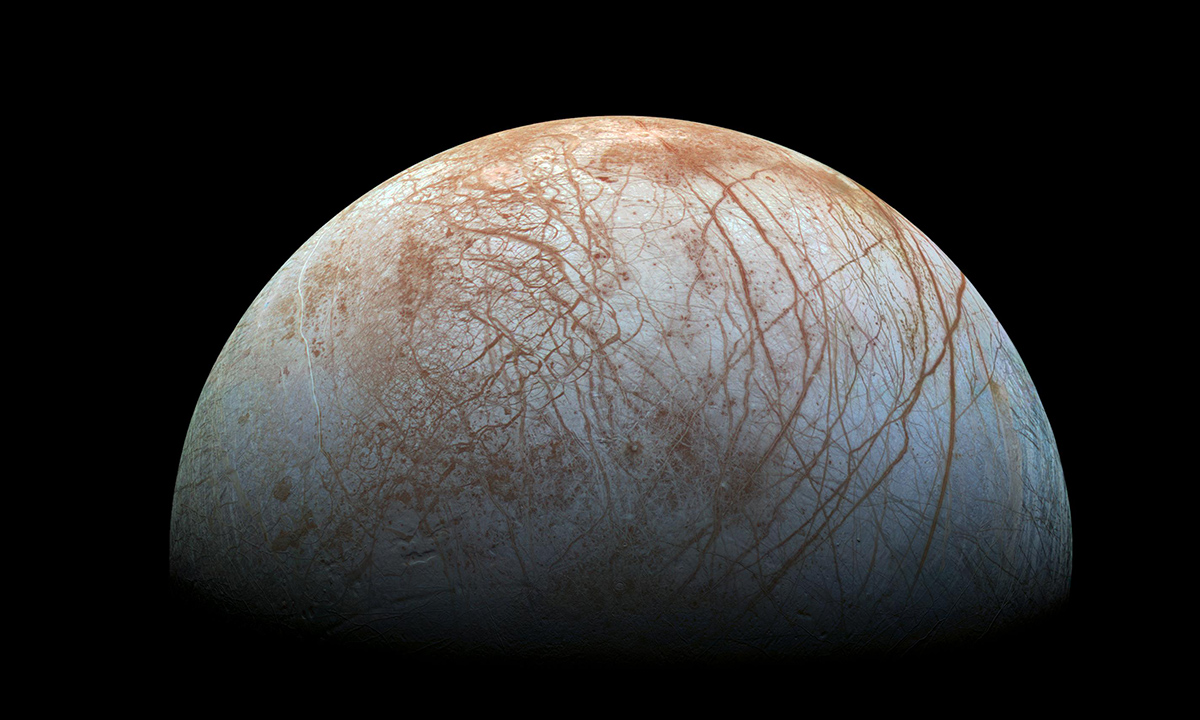
"There might be octopuses swimming in the depths of Europa, for all we know" - Nishant to Rion
Water, some esssential chemicals and a source of energy. That's all life needs, these are the "ingredients" for life. Europa, an icy moon of Jupyter, of about the same size as our own moon (but waayyy more interesting than our moon) has all the necesaary ingredients. But you won't think so if you just take a look at it - I mean, it looks dead and diseased (with all those red scars!). But what's interesting about this moon is not visible from outside. It has an ocean which contains about twice as much water as earth below it's thick icy crust. Below that ocean, are rocks and possibly, geothermal activity. But that geothermal activity is not what's keeping the ocean from freezing, obviously it's not the sunlight which is aborbed and reflected by the thick icy crust. This somewhat magical, somewhat mysterious, source of energy is Jupyter itself. Specifically, it's the tidal forces of Jupyter on Europa. It is this same phenomena which results in those scars. But why are the scars red? We can only guess. This phenomena makes us rethink the definition of the goldilocks zone. It seems like moons of massive planets, far away from the host star are also inhabitable and we should broaden our horizon and look for exo icy moons as potential candidates for life.
Clearly, the possibility of life makes Europa a very interesting target. Afterall, if we find life on Europa, however small and primitive may it be, it will tell us one thing very clearly - if life can happen, it will happen. And our whole universe must be beaming with life.
The most interesting geographical feature of Europa are the Lineas (short for Lineaments), the red scars, so to speak. The exact reason for their formation is unknown but people have maade some guesses. It might be partly due to tidal forces from Jupyter and partly due to asynchronous rotation of Europa with Jupyter. We aren't yet sure what kind of salts are present there. In this project, we will investigate the Lineas, try to find out what salts are present in the Lineas and see (and hope) something organic comes up. Hydrated salts have already been detected in Europa and it seems just like a matter of time before we find organics.
This might be analytical as an ML approach to it goals 2 would take huge memory, unless we find something clever
The Neural Networks will be coded by both of us. Rion will look for more spectroscopy data in space based telesccopes while Nishant will for them in ground based ones. For Classifying the Lineas, Rion shall work on classification based on age using DBSCAN while Nishant works on classifying based on geographical features using K Means. We will need (a lot of help) from our mentor, Guneshwar Sir, especially in the second part.
People have guessed that the red colour of the Lineaments is due to magnesium sulphate or sulphuric acid. If that is the case, the spectroscopy data restricted to just the Lineas should match with spectrum of the these compounds. But why does it matter? The chemical composition of the Lineas will give us massive hints about the chemical composition of the oceans underneath. The better understanding of the chemical composition of Europa is very desirable since that will give us hints about the lifeforms (crossed-fingers) and their biological processes